5th June is World Environment Day, a day initiated by the United Nations to encourage awareness and action for the protection of the environment. This year the theme is ‘Ecosystem Restoration’. CCG is committed to sustainability and environmental objectives and in this article we will discuss how these ideas are used by CCG’s teams to protect and encourage healthier environments and healthier lifestyles for residents through their projects.
Urbanization is a never-ending phenomenon. Today, 54% of people worldwide live in cities, and this is expected to rise to 68% by 2050 (according to UN-Habitat). It is important, therefore, to ensure that city dwellers have access to and appreciation of the wildlife and environment around them, both for their own benefit, and for the environment’s.
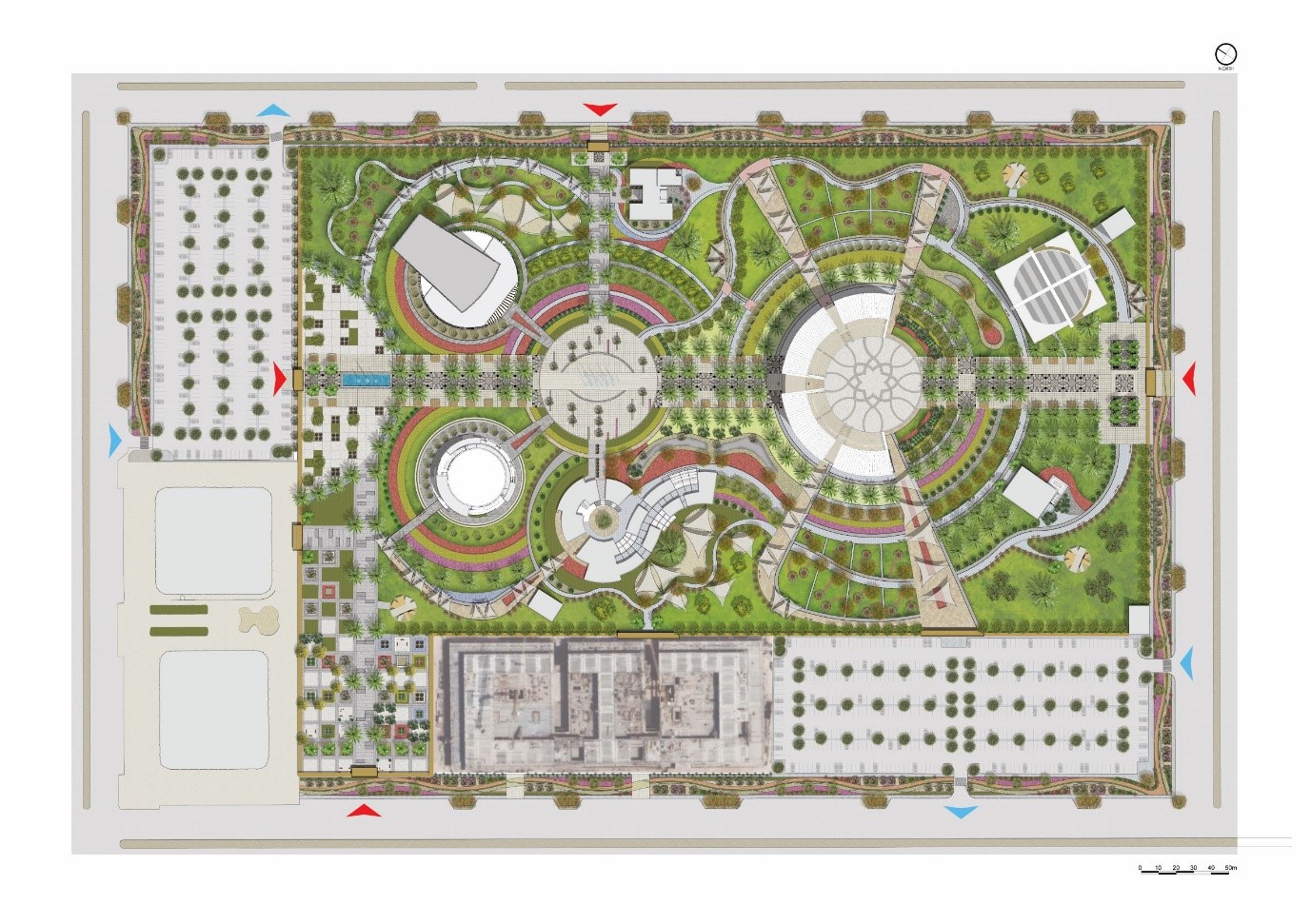
Studies have shown positive links between landscaping and public health, which is what inspires us as landscape architects and urban planners to design and manage land resources in a way that will secure the best possible outcomes for people, the environment and the economy. Green spaces and parks encourage and increase physical activity and help to create healthier, more beautiful, more sustainable and more livable neighborhoods. Urban planning, landscaping and irrigation networks are 3 key interconnected pillars that support one another in a sustainable way and each one is important for the health and wellbeing of residents, wildlife and ecosystems.
CCG’s Urban Planning Center aims to improve urban planning and management in participatory and inclusive ways by creating progressive city plans that contain all required services for happy and healthy residents and ecosystems. This includes proper green public and open spaces and sufficient pedestrian networks for walking and cycling.
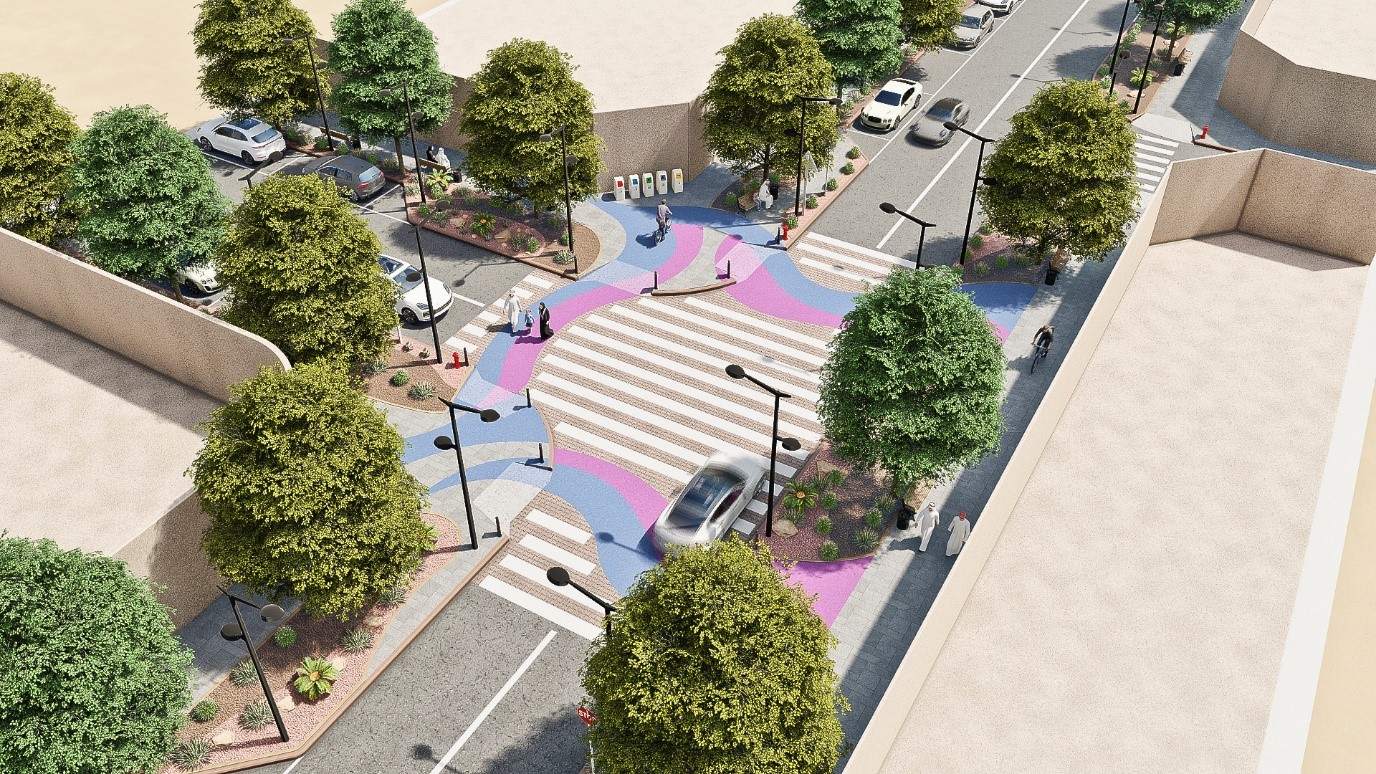
The percentage of green and open spaces within a city is a key indicator of welfare levels and of the quality and comfort of living in the community. In general, 7% of the developed areas is the minimum accepted percentage for green and open spaces in cities, 10% is the best to allow for proper open spaces and in some cities, the minimum requirement is 20%. As we raise the percentage, the quality of life becomes better.
Most communities are organized around cluster centers that include key services for residents such as schools and local shops. Green areas and parks are planned in the same way, as they are considered vital facilities for communities and residents. Parks and open spaces are planned according to the population and population density of the area, as well as by walking distance to residential areas and centers, and pedestrian accessibility.
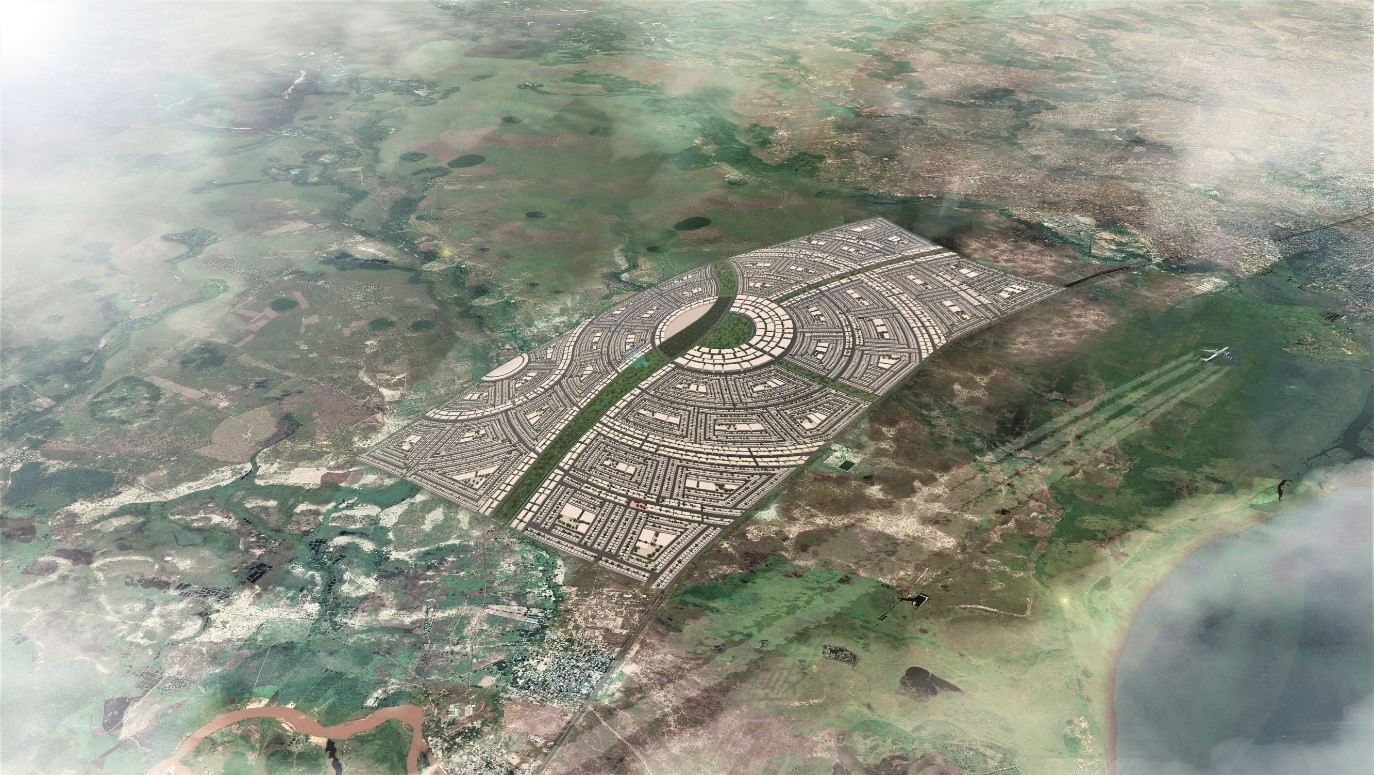
Residential clusters are the smallest planning units, typically with a radius of 300 – 500m, and there must be a public garden within each one. Three to five clusters make a residential neighborhood, which must include a neighborhood park and playfield, while three to five neighborhoods comprise a residential district which must have a district park and playfield. The next level up is three to five districts which make a residential sector and these must include a city park and playfield.
Urban planners also plan green areas beyond just parks and playfields. For example, landscaped areas placed along roads ensure a clear network of shaded streets to encourage walking and cycling and to provide a better pedestrian experience that makes cities more sustainable socially, economically and environmentally.
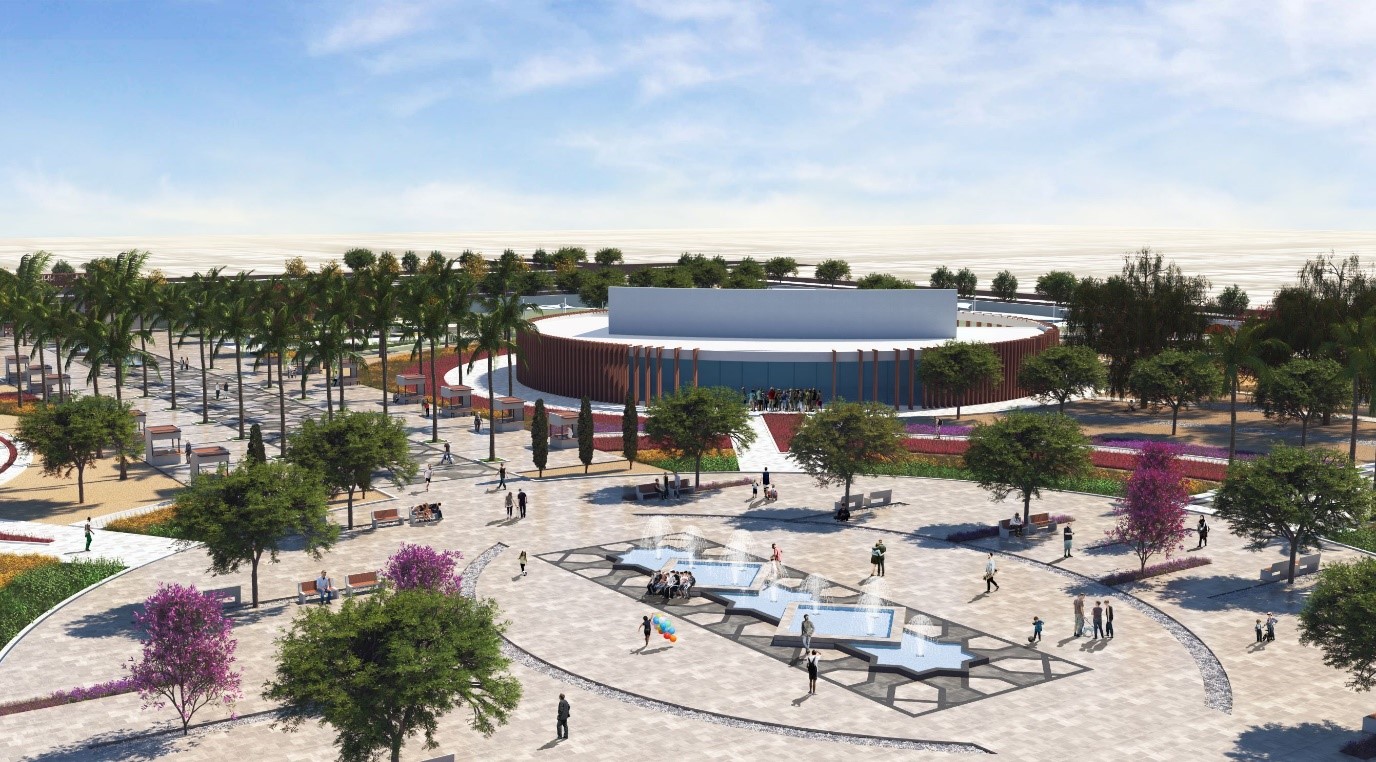
Green spaces in cities such as parks, city squares and other scenic environments are environmentally friendly, promote social interaction and community belonging, encourage spending time outdoors, create a distinctive community identity, encourage a healthier lifestyle, provide visual pleasure, improve air quality by fighting air pollutants, maintain local ecosystems and make cities more livable.
CCG’s Landscape team uses trees to increase the sustainability of a project. For example, in Al Amerat Public Park, CCG used native shade trees to provide shade and reduce the need for air conditioning and fossil fuel consumption. The team usually aims to use native trees and plants in most projects as they are more sustainable, require less water and are better suited to the climate.
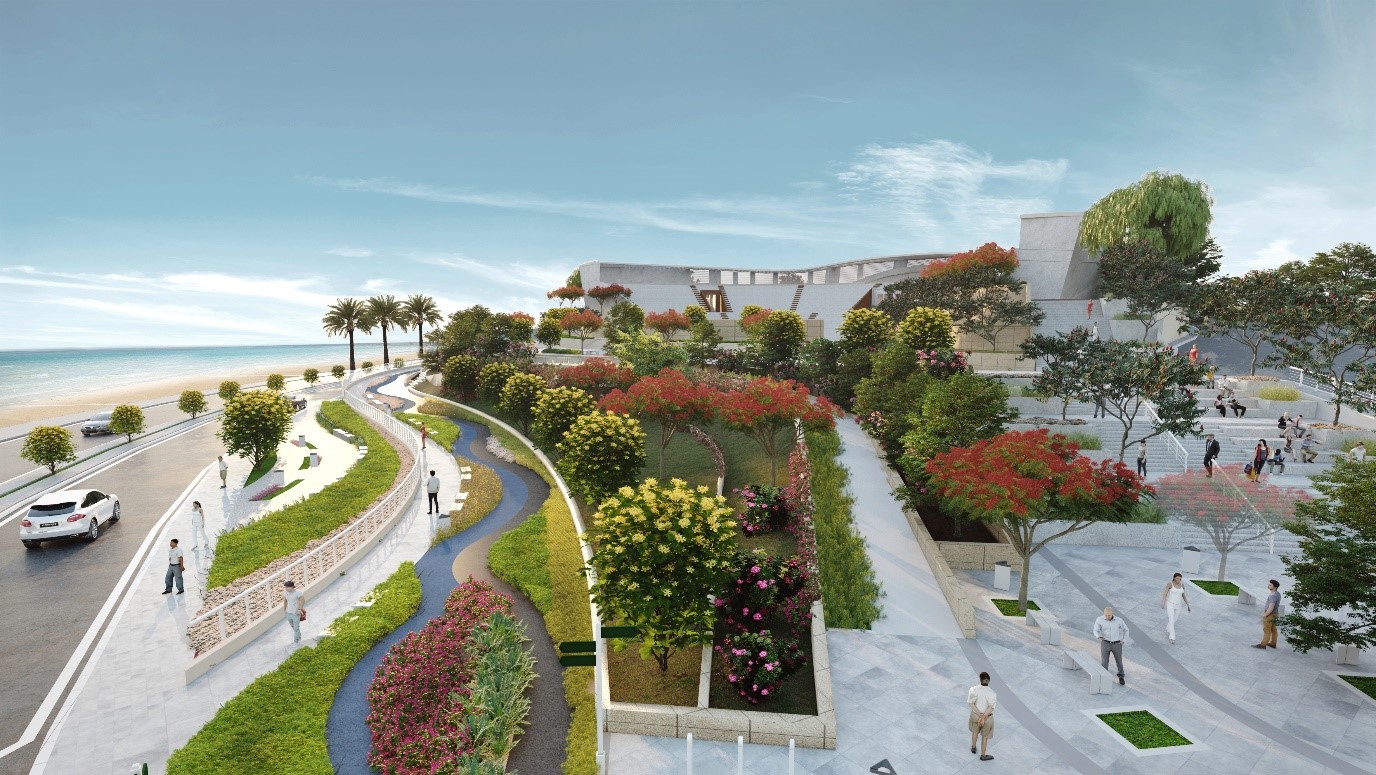
During CCG’s work on the Ampitheater project, the team’s main objective was to design urban green spaces with the most optimal selection of ground structure, trees, shrubs, vines, groundcover plants, hedges, perennials and annuals in order to secure the most viable urban setting in Aqaba to promote positive public spaces.
Irrigation networks are also key in supporting the growth of agricultural crops, maintaining landscaping and to providing water to soil in dry areas or dry months of the year. Irrigation can also protect crop from frost in colder months. It often uses treated graywater from residences which makes plant growth sustainable throughout the year, allowing the city’s residents and wildlife to enjoy the benefits of landscaping and green areas, while utilizing wastewater.
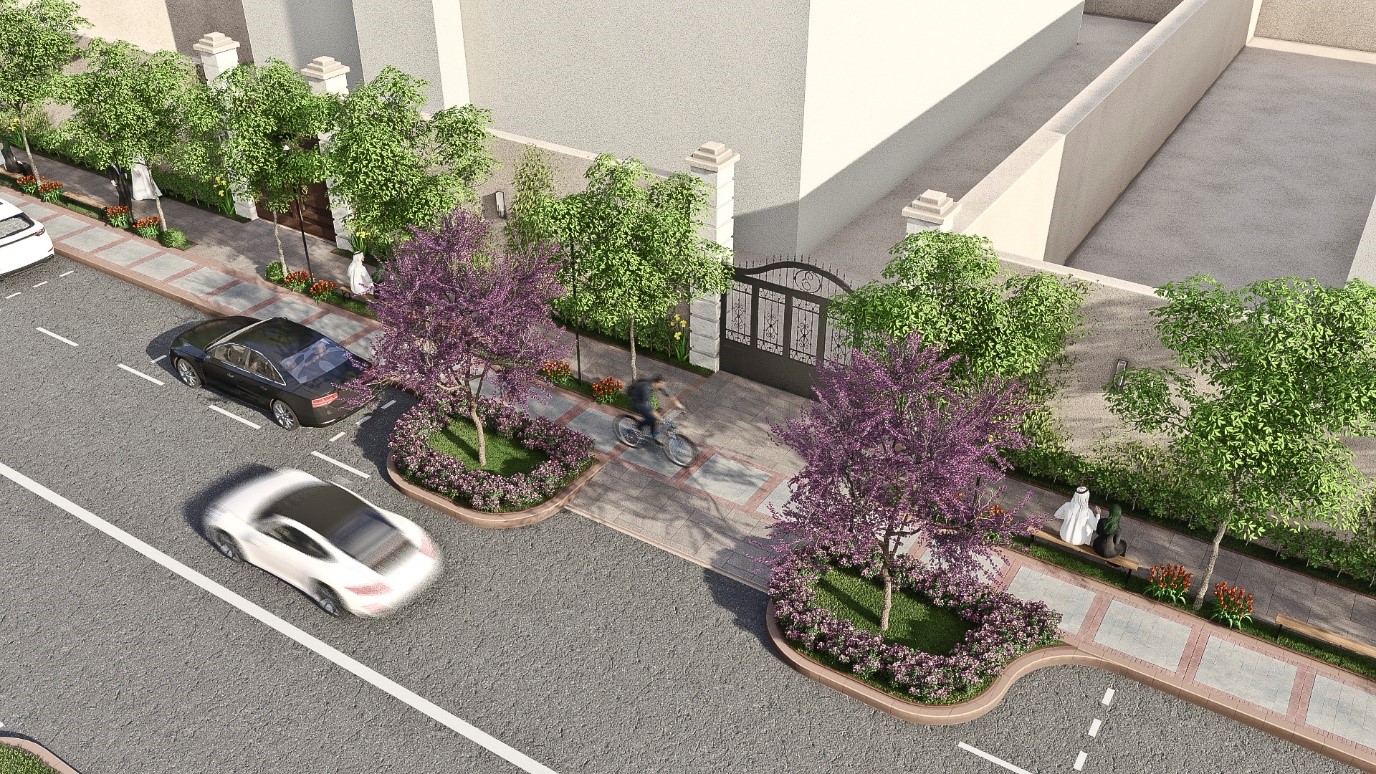
A great example of successful and sustainable irrigation network planning is CCG’s work on the wastewater collection, treatment and effluent reuse project for the North Jordan Valley. The project aimed to improve the health and living standards of residents, protect the environment, surface water and groundwater resources, and reclaim and reuse treated effluent for irrigation. CCG provided a detailed design for networks and house connections for 16 communities that helped to provide irrigation to support local agriculture in an area where otherwise, the soil is often too salty to do so.
Now that more and more of the world’s population are living in cities, it’s more important than ever to ensure they are built to help residents live healthy lives while maintaining their connection with and appreciation for wildlife and the ecosystems that support them. We are glad to know the facts about how green spaces and landscaped areas not only help to protect wildlife but also help to encourage healthy people, too.

Firas Sweidan is the Head of Department at CCG’s Urban Planning Center. He is an experienced Architect, Urban Planner and Designer with 15 years of experience of working with multinational and multi-disciplinary firms in both consultancy and contracting. He has worked with a wide variety of project types and scales and is an advocate for excelling human societies through Urban Planning as a process of solving problems in a creative manner, a social activist and arbitrator of student projects in a number of universities in Jordan.

Rasha Samawi is the Head of CCG’s Landscaping Unit. She has a diversified portfolio of projects including public parks, educational, commercial buildings, hospitals, towers, hotels, residential, urban design, master plans and infrastructure projects. Rasha leads and manages her team to achieve project goals based on quality and cost efficiency and she is a LEED Green Associate, member of the Jordan Green Building Council and member of the US Green Building Council.
If you would like further information about the services provided by CCG’s urban planning center or landscaping unit, or if you would like to speak with one of our specialists, please contact us on +962 6 461 2377 or email bd@group-cc.com.

